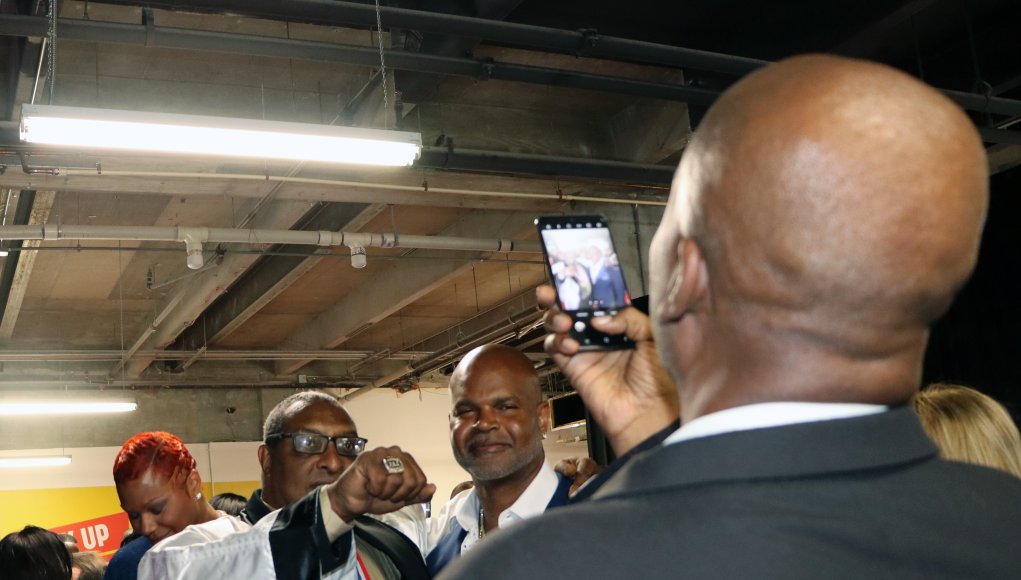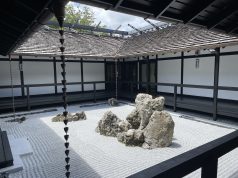Growing up in Seattle, Troy Wright dreamed of some day meeting Muhammad Ali. In 1968, he hopped on a bus when he heard his idol was in town.
But when he arrived, it was too late.
“I was running around looking for Muhammad Ali,” Wright said. “But an hour and a half, two hours, it expired…I never got to see him.”
Ali died in 2016. But last month, Wright helped organize an exhibit at Fifth Street and Washington Avenue on Miami Beach to commemorate the 60th anniversary of the famed boxer’s legendary fight against Sonny Liston that will be up until April 1. Now executive director of The Washington Ave BID (Business Improvement District), he says the effort was among the most memorable events of his life.
“I’ve been blessed to do some incredible things in the past,” Wright said. “And now being able to do Muhammad Ali is life changing.”
The Washington Ave BID partnered with HistoryMiami Museum to make “I Shook Up the World,” an exhibit featuring pictures and memorabilia from Ali’s life at a vacant lot at Washington Avenue and Fifth Street. The space was home to the Fifth Street Gym, where Ali trained.
The exhibit serves as a time machine, offering guests a glimpse into Ali’s life from his childhood to the legacy he left behind. Hundreds have attended since the opening on February 22. They’ve been taken through a journey inspired by the boxer’s photos and personal items.
Guests shared stories about their encounters with “The Greatest,” which is what Ali called himself. On opening night, visitors jammed out to old-school songs from the ‘80s together, including “Rapper’s Delight.” The song’s lyrics about Muhammad Ali are a testament to his influence, which lasted far beyond the lifespan of his boxing career.
“The most important thing I remember is when he said I float like a butterfly and sting like a bee,” said Rick Sykes, a reality TV star who attended the exhibit’s VIP opening. “That’s what I remember the most.”
Ali, who was born Cassius Clay in Kentucky, was an Olympic boxing champion. He fought the world heavyweight champion at the time, Sonny Liston, in 1964.
While training, he would run about five miles from Miami’s Overtown to train in the Fifth Street Gym. That was because blacks weren’t welcome on the beach during segregation. He scored a technical knockout against Liston in the seventh round, maybe the greatest upset in boxing history.
A woman looks at a framed photo showing the moment Ali defeated Liston on Feb. 25, 1964 (Photo by Kelly Sanchez/Caplin News).
Clay, who would change his name to Ali, had studied Islam and the black nationalist movement, but didn’t make his association public until the day after the fight. Civil rights leader Malcolm X later claimed Ali converted to Islam and joined the Nation of Islam several years before the fight.
Ali refused to serve in the Vietnam War when he was drafted in 1966 because of his religion. This cost him his world title and his boxing license. The debate ended four years later when his boxing license was restored in 1970, allowing him to keep boxing until he retired in 1981.
The boxer’s son, Muhammad Ali Jr., attended the opening of the exhibit. It’s open from noon to 8 p.m. every day. General admission tickets are $10 for adults and $5 for children. It is scheduled to conclude at the end of this month.
“Well, my father was always persistent on everything he [did],” Ali Jr. said. “He’s the greatest humanitarian, the greatest dad, the greatest boxer, the greatest man ever.”


































